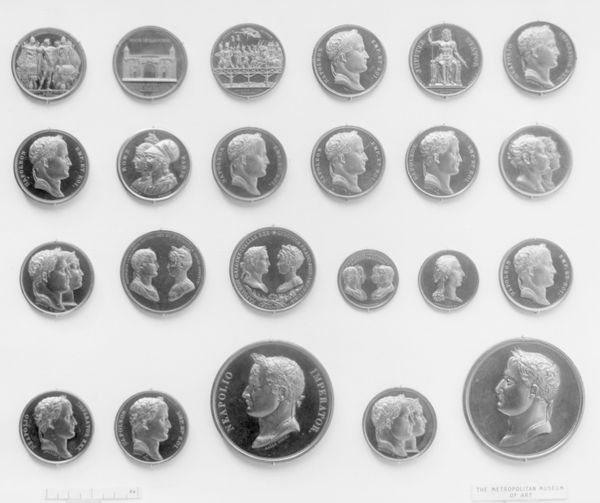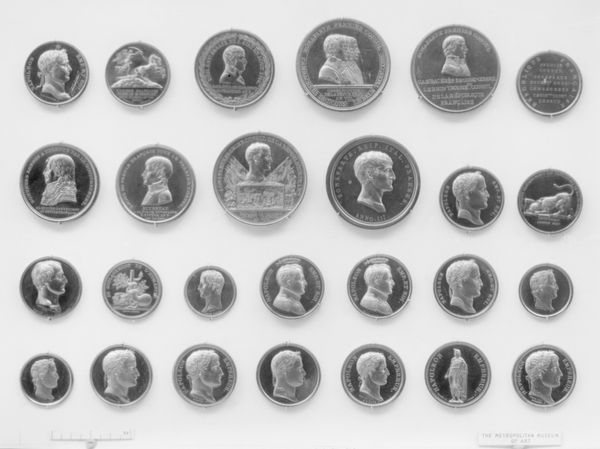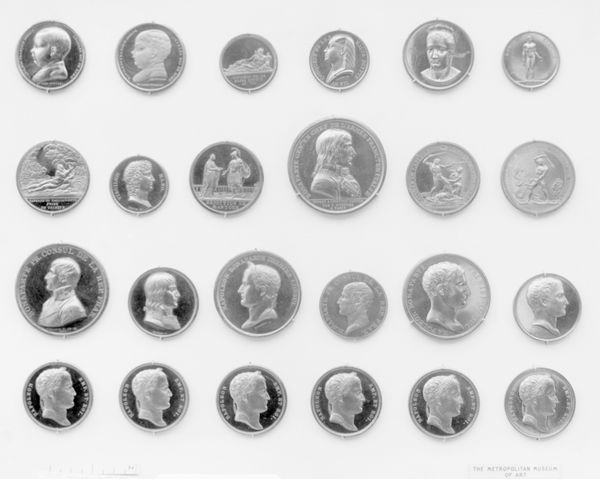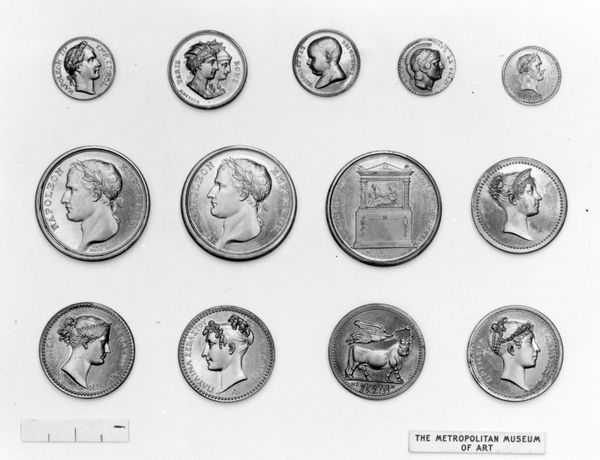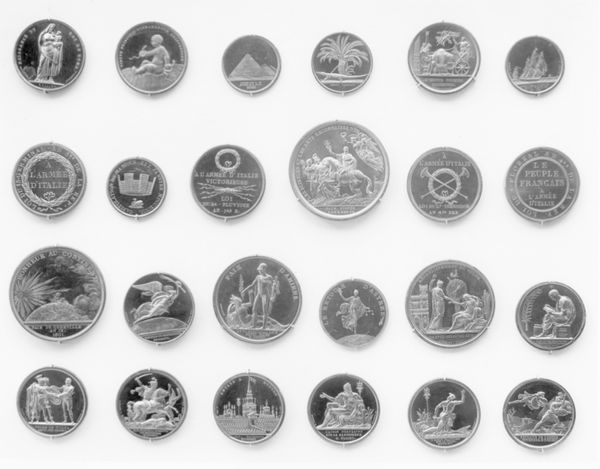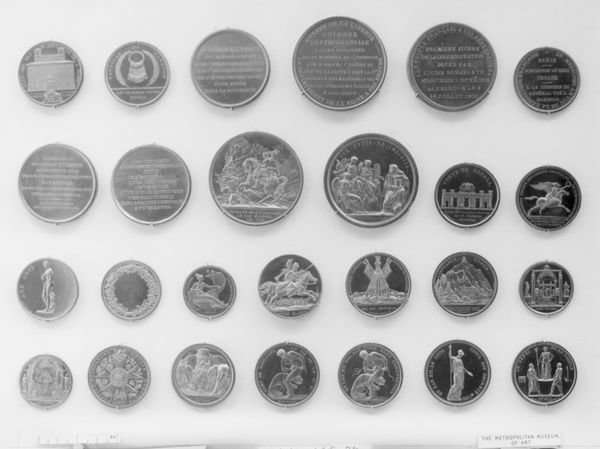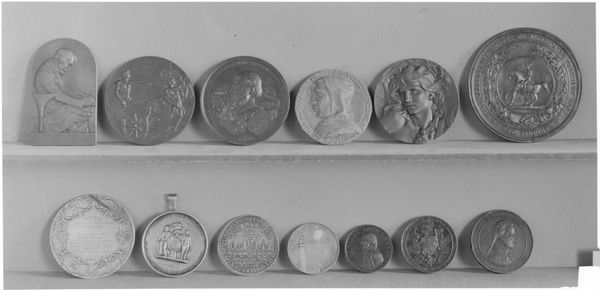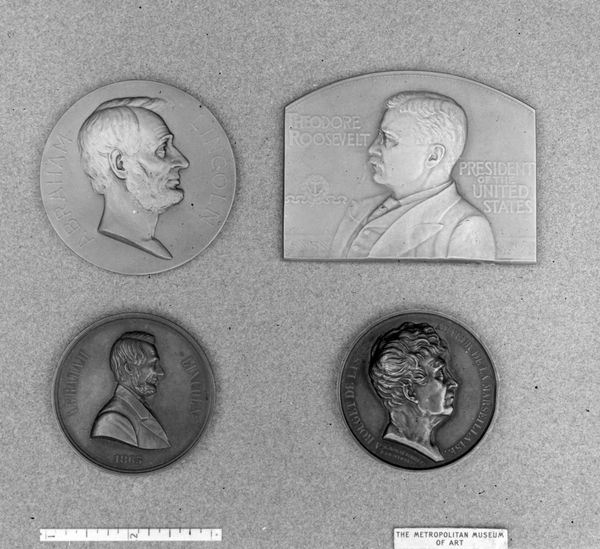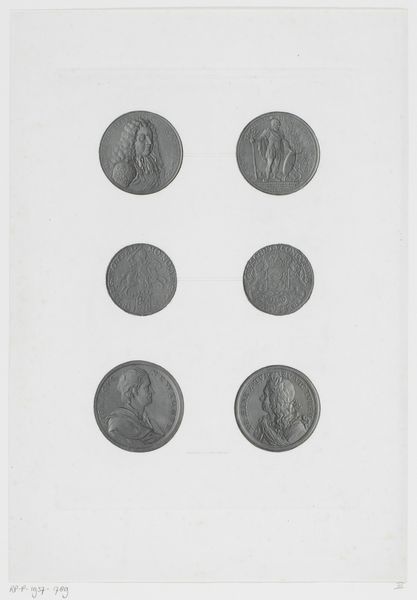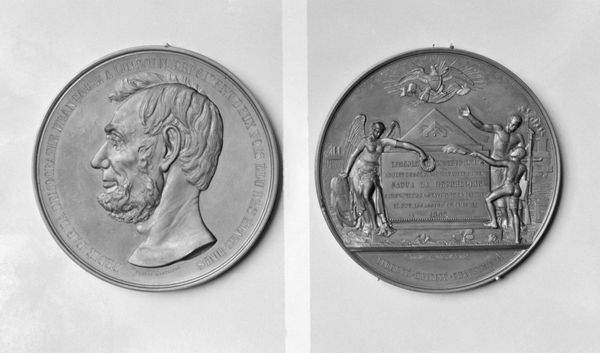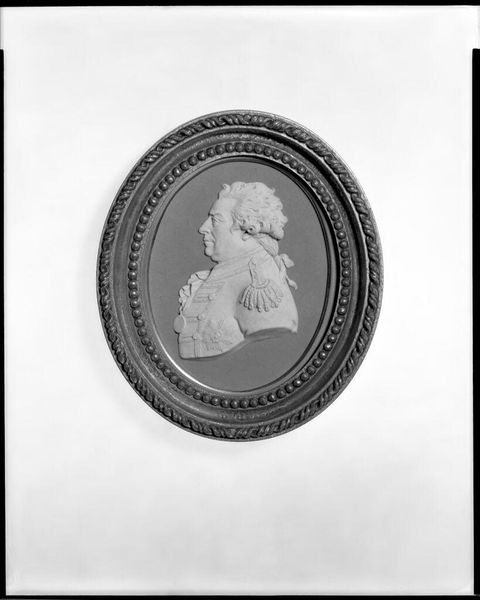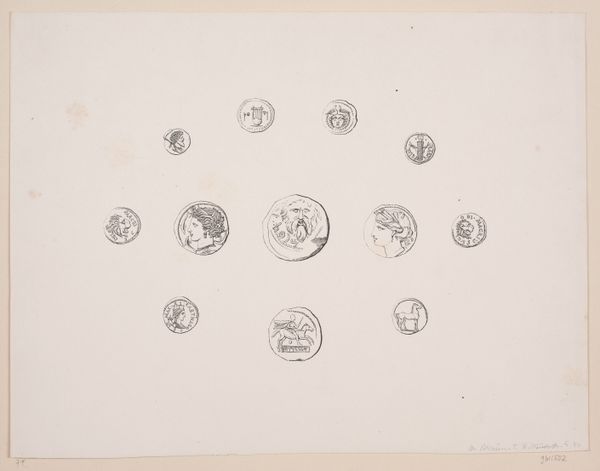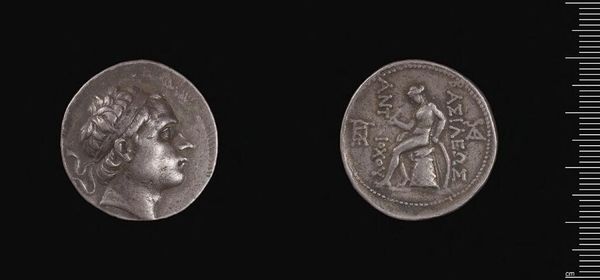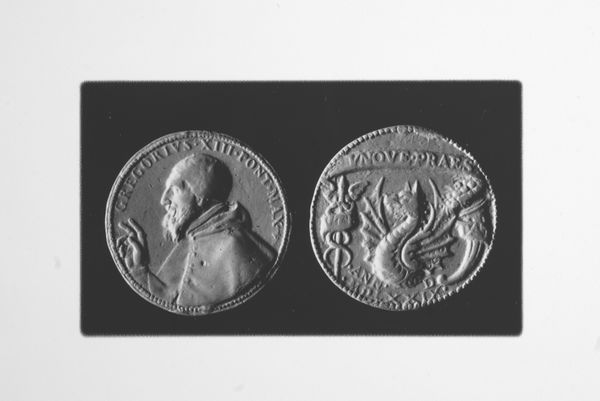
Commemorating the Coronation Festivals. 1804. 19th century
0:00
0:00
sculpture
#
portrait
#
medal
#
neoclacissism
#
sculptural image
#
sculpture
#
decorative-art
Dimensions: Diameter: 1 3/8 in. (3.5 cm)
Copyright: Public Domain
Editor: This is *Commemorating the Coronation Festivals. 1804* by Nicholas Guy Antoine Brenet. It appears to be a collection of small sculptures. They look like medals or coins. Their uniform design, and the sheer number of them, create a sense of overwhelming...adulation, I guess. What do you see in this piece? Curator: It’s interesting that you use the word “adulation.” This piece operates as propaganda, consciously crafting Napoleon’s image. Look at how Neoclassicism is deployed: a visual language of power rooted in ancient Rome. But doesn't it also strike you as incredibly… sterile? Editor: Sterile? I can see that. It feels less about genuine celebration and more like manufactured consent. The rows upon rows of similar images almost dehumanize him, and maybe even those meant to be celebrating him. Curator: Exactly! Think about the political climate of the time. Napoleon was actively trying to legitimize his rule, to establish a new dynasty. These medals weren't just commemorative trinkets; they were tools of social engineering, reinforcing his power through constant visibility and a calculated association with imperial grandeur. Does it work, though? Does the sheer repetition dilute its impact? Editor: That's a good question. Maybe it's meant to wear down resistance through constant exposure? Like, you can't escape Napoleon. He’s literally everywhere, even in your pocket change! It reminds me a bit of contemporary advertising. Curator: An insightful parallel. Power structures often function through subtle yet pervasive visual messaging. Looking at Brenet's work encourages us to interrogate the narratives that visual culture perpetuates, both then and now. It forces us to think about how power manipulates symbols. Editor: I see it now. I was focused on the art itself, but it’s much more about what the art *does*. Thank you. Curator: Likewise, thinking about it in terms of propaganda gives us new ideas about it as art.
Comments
No comments
Be the first to comment and join the conversation on the ultimate creative platform.
